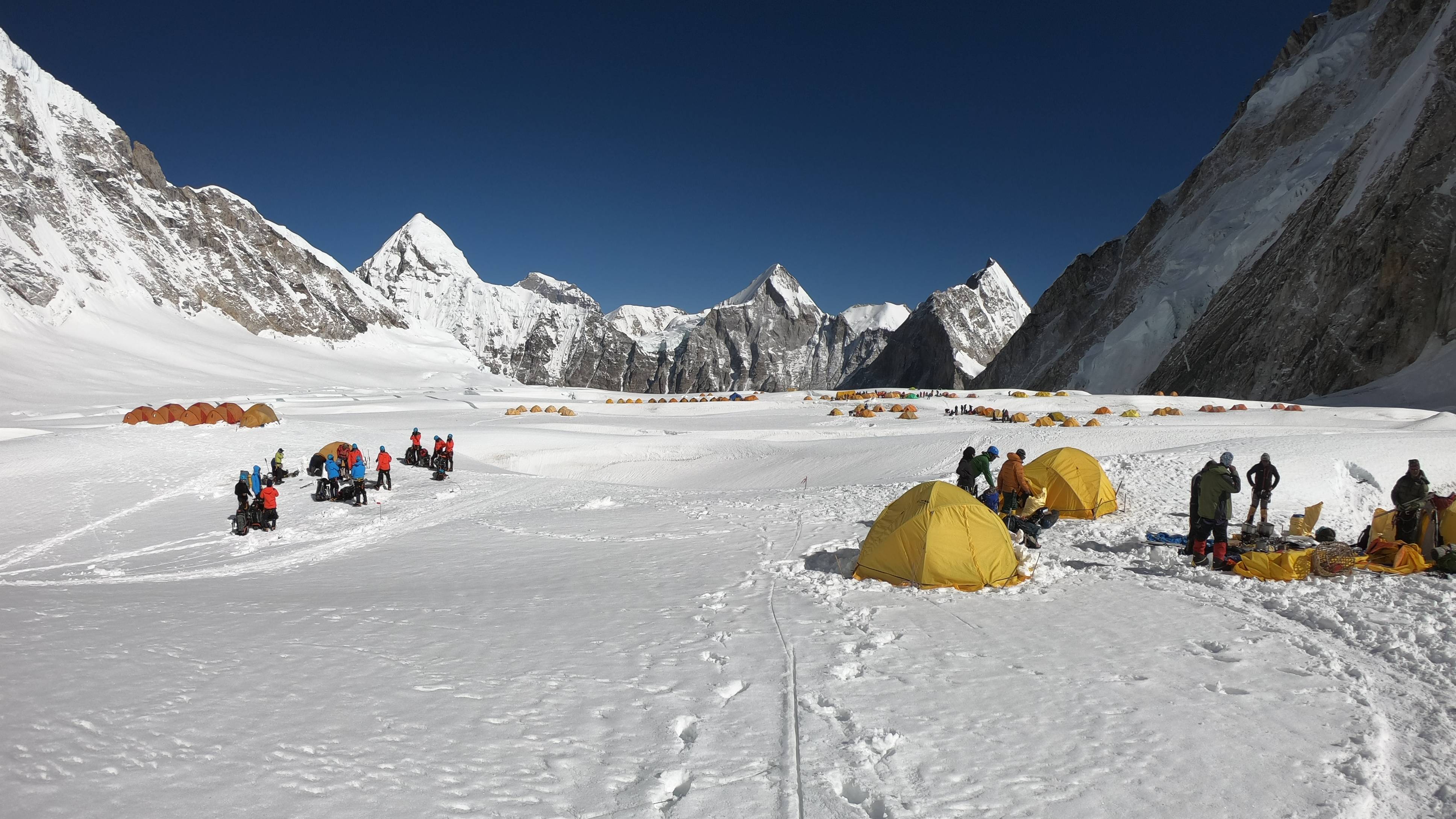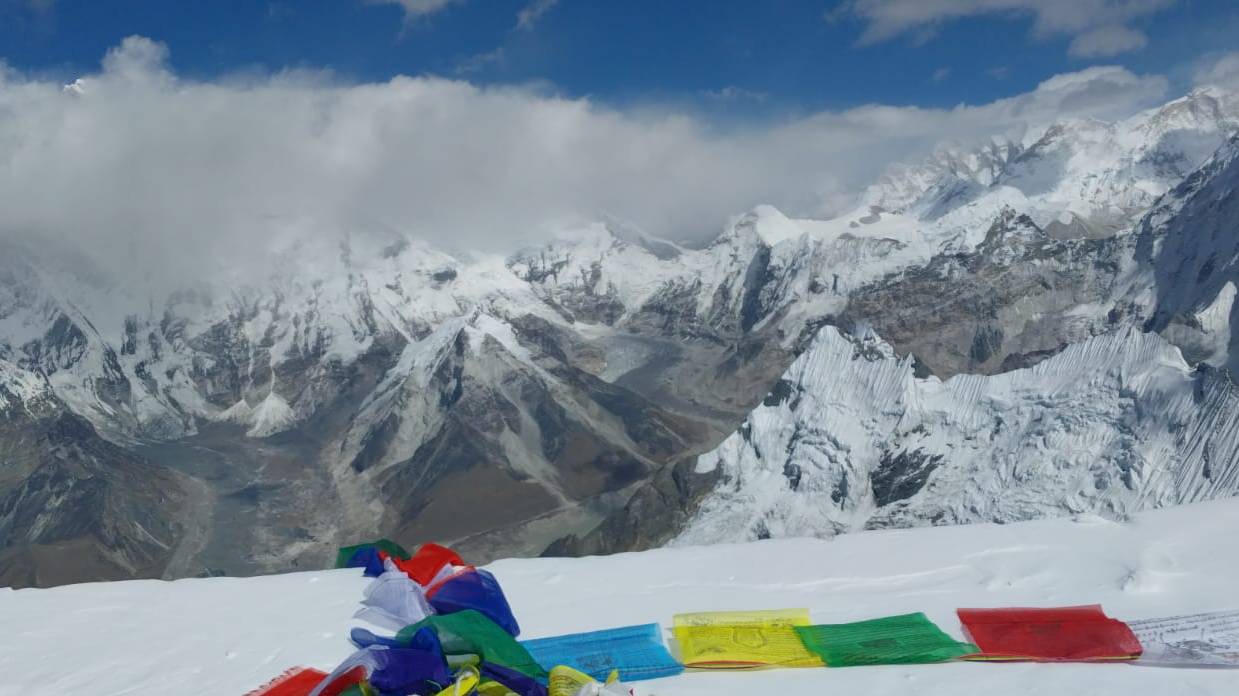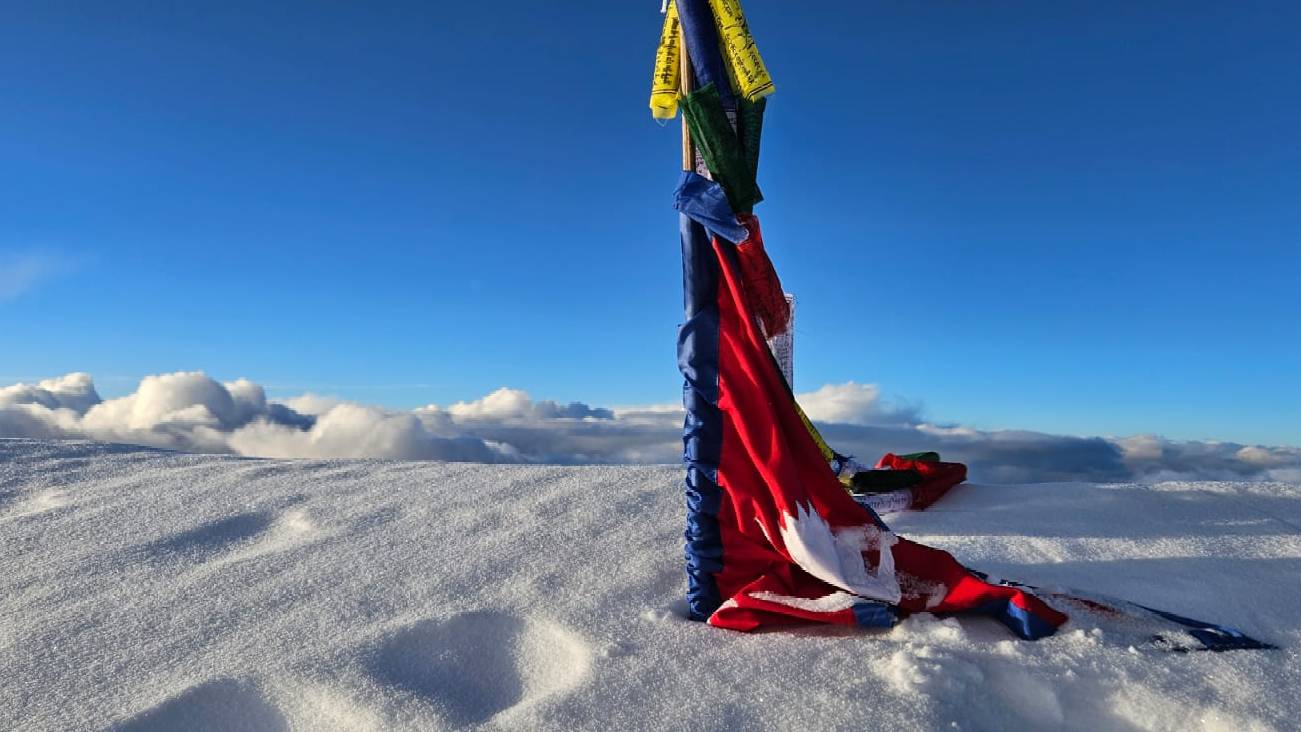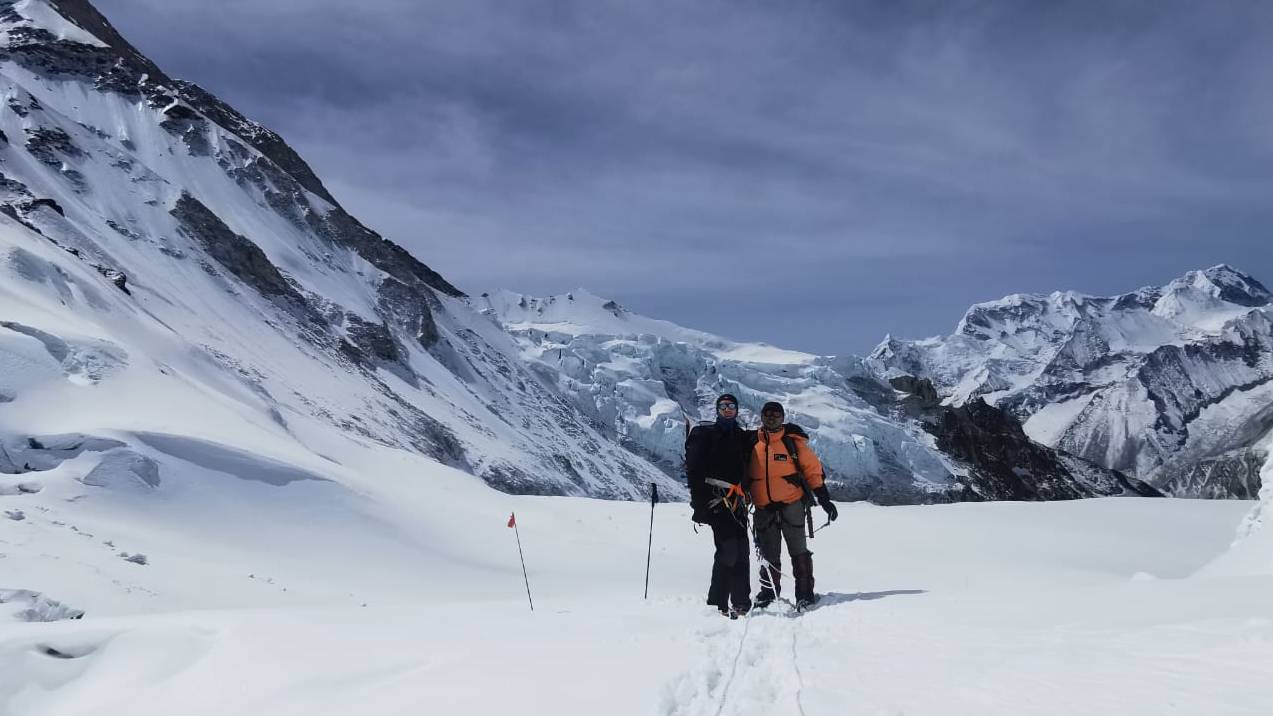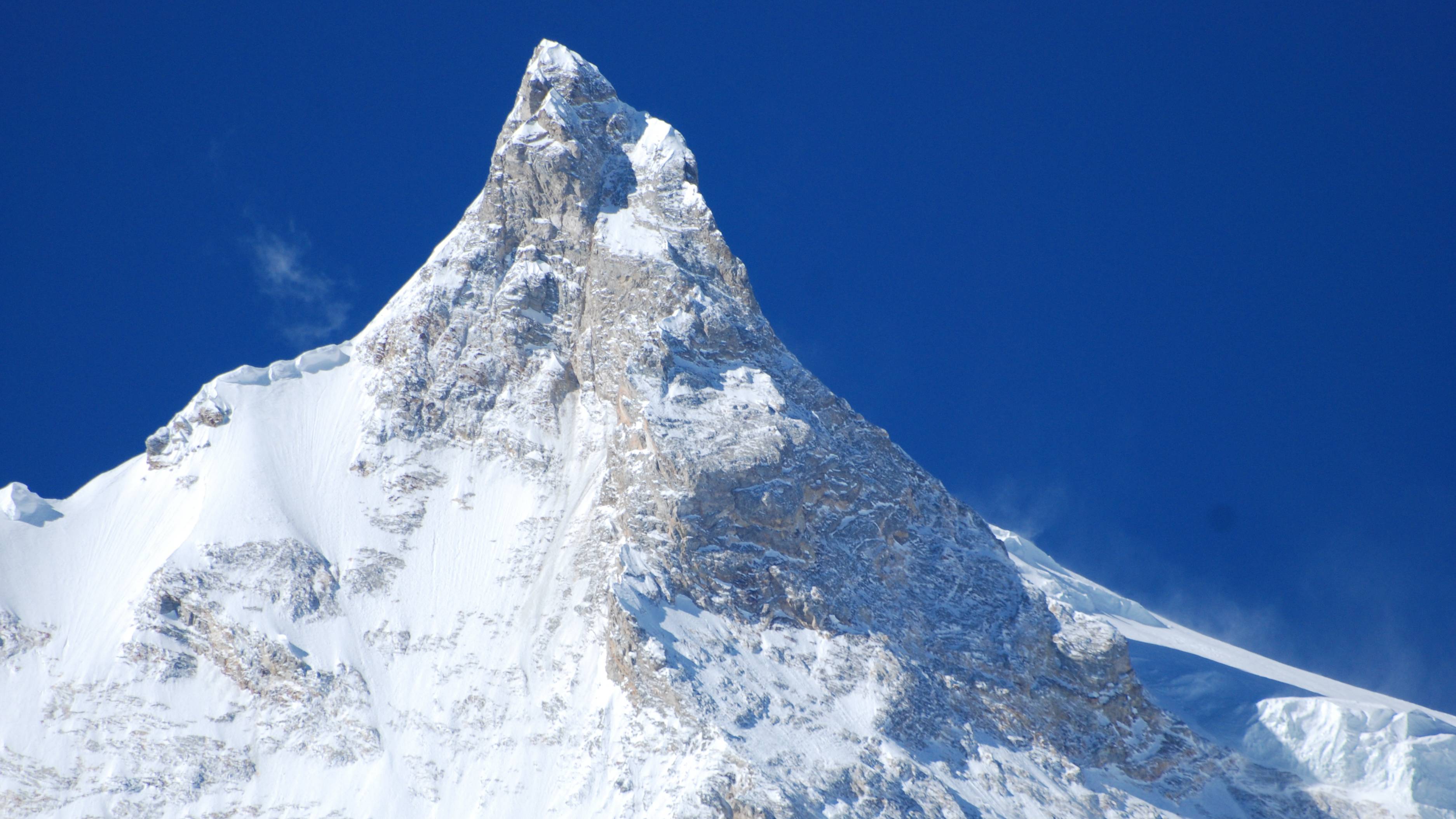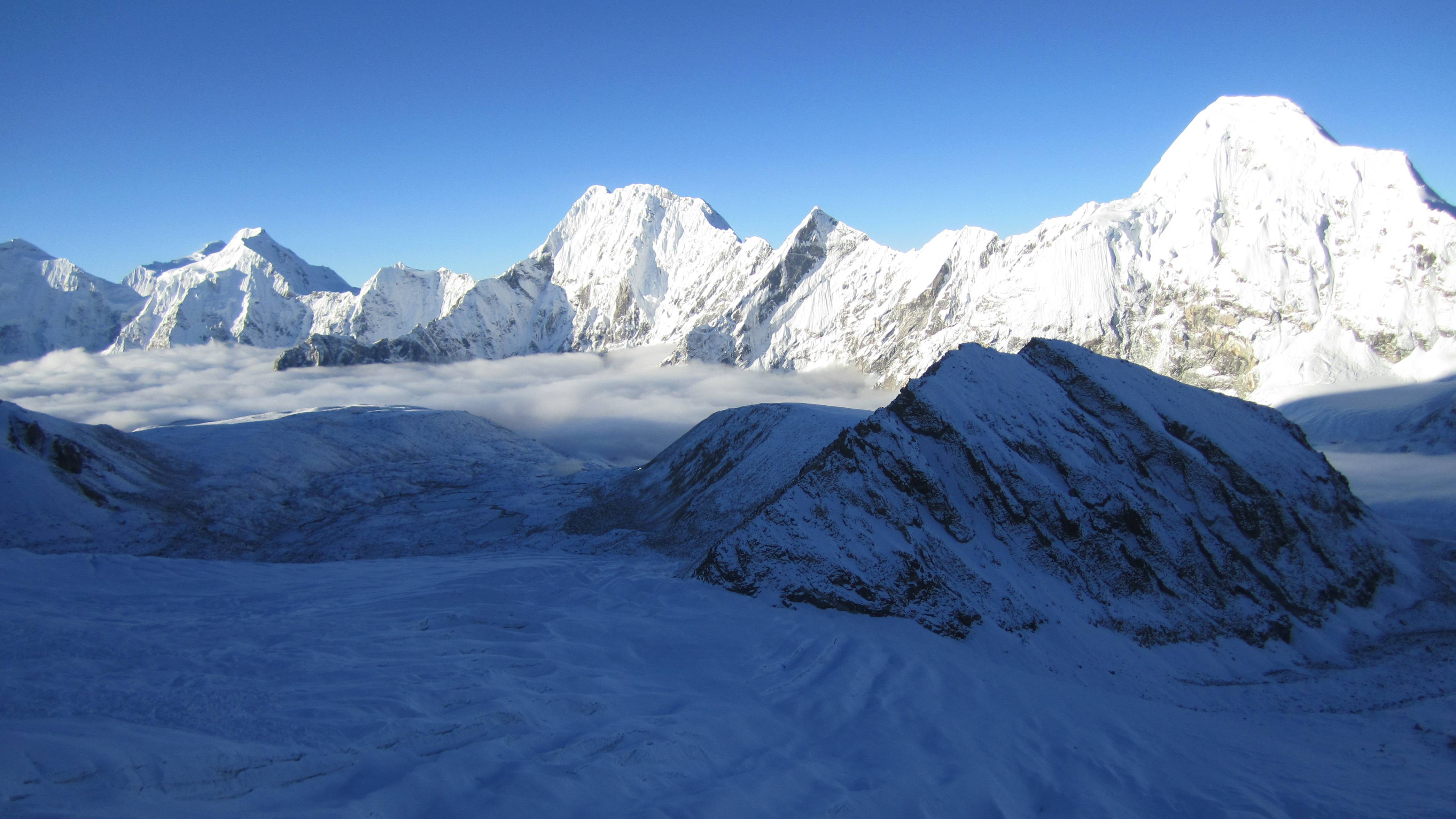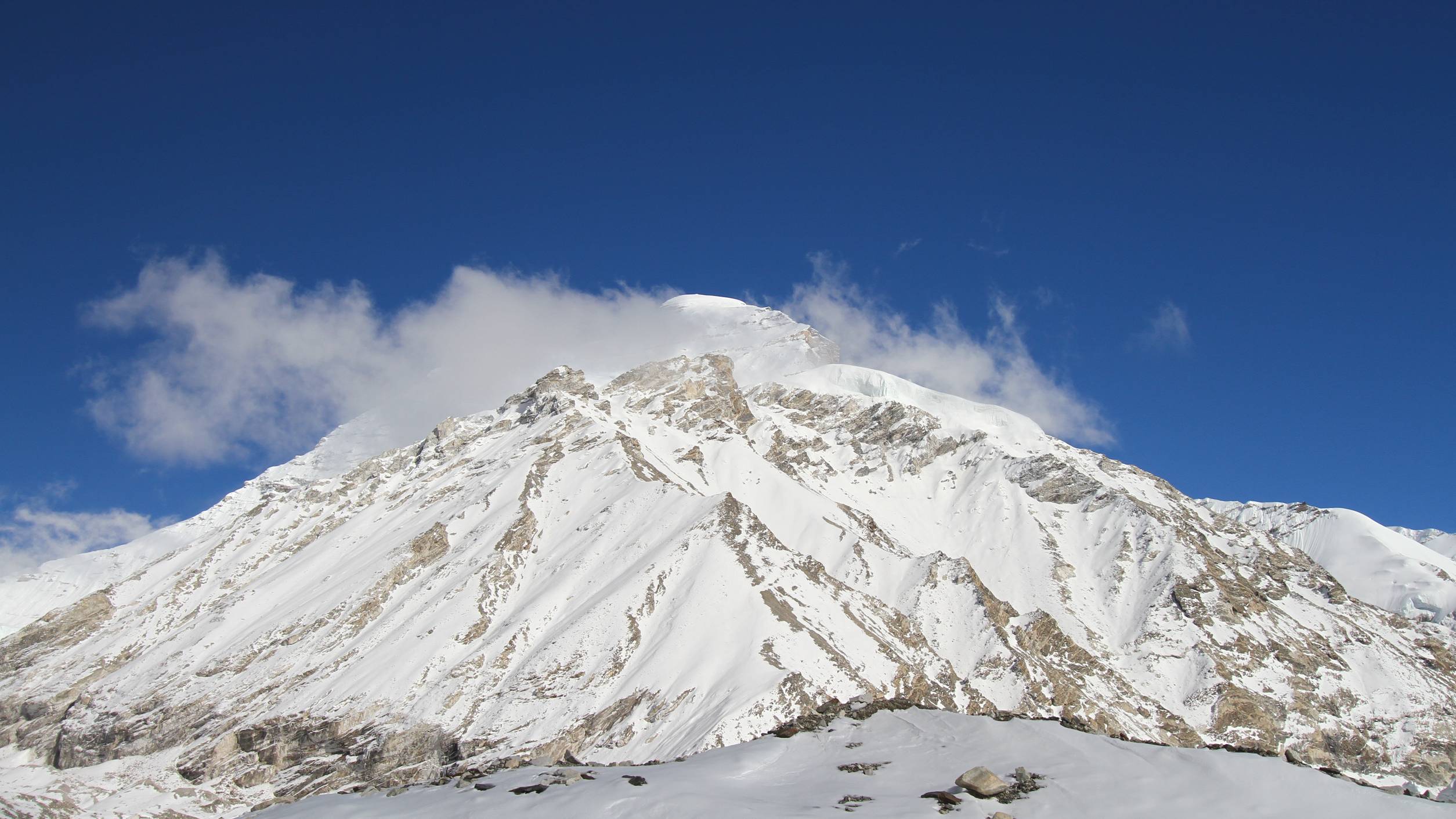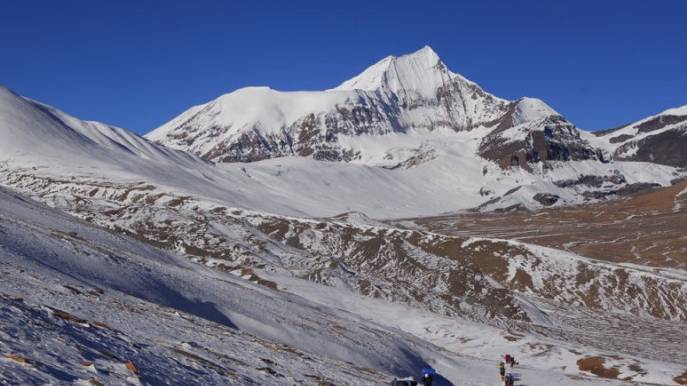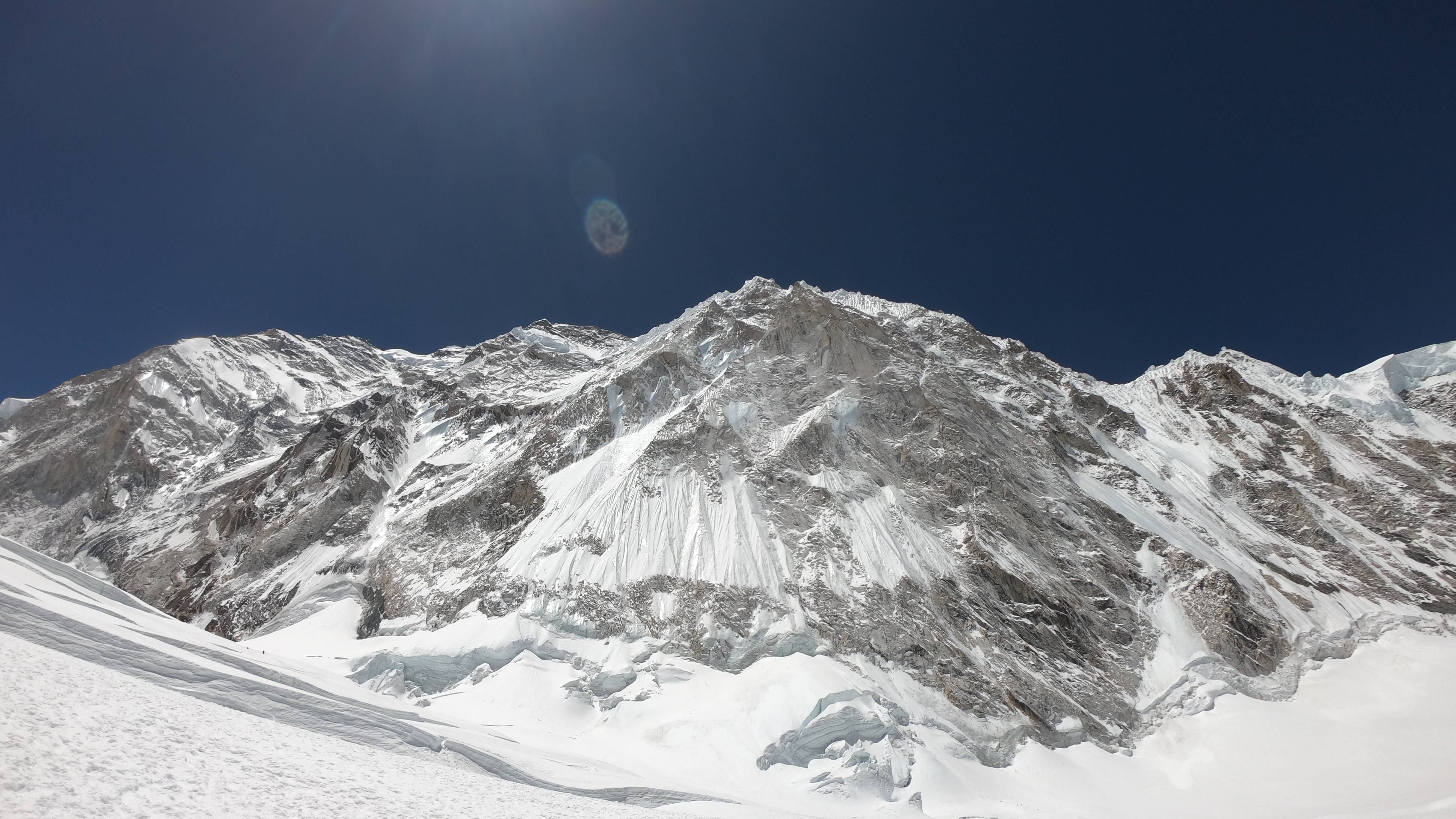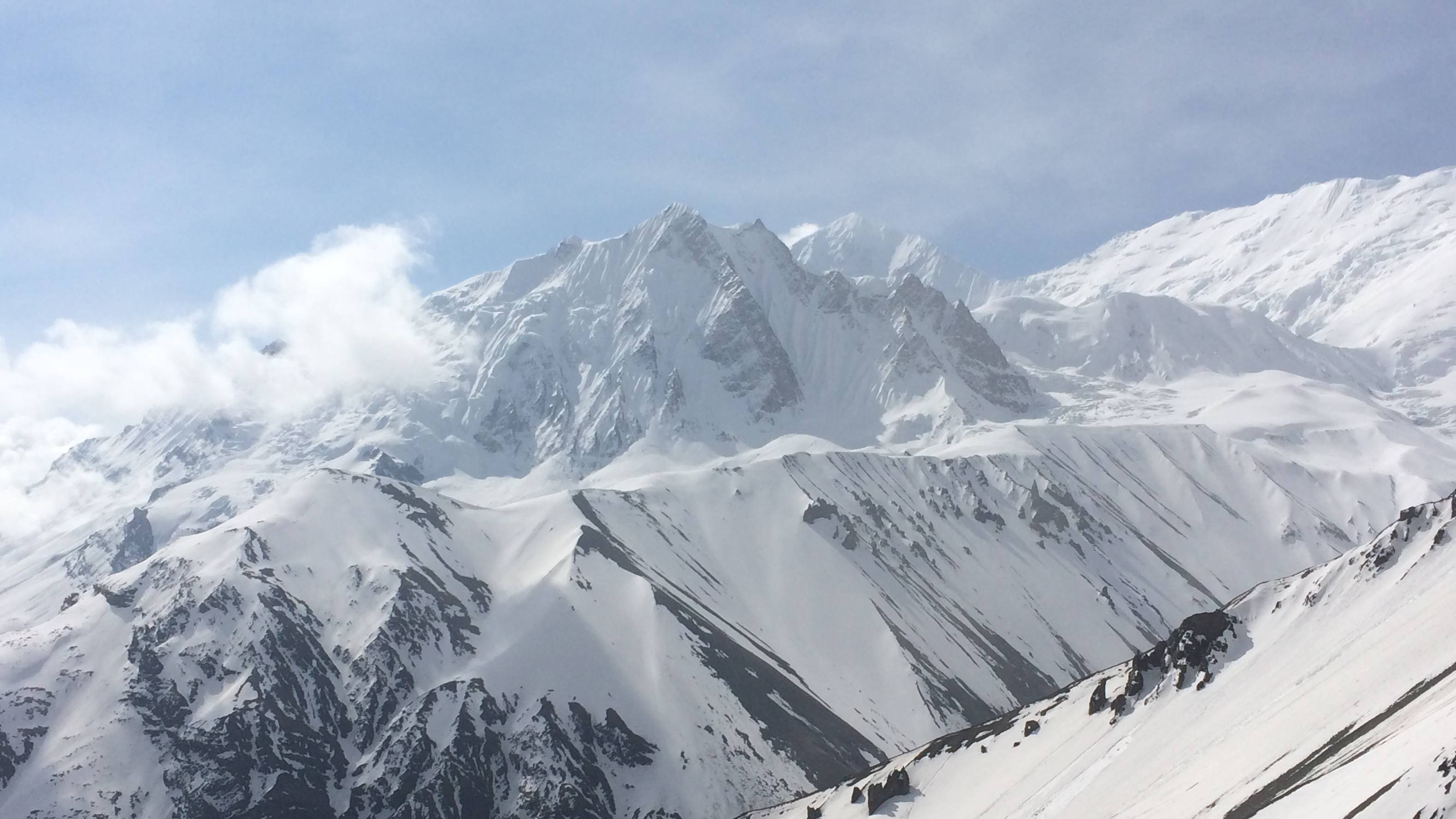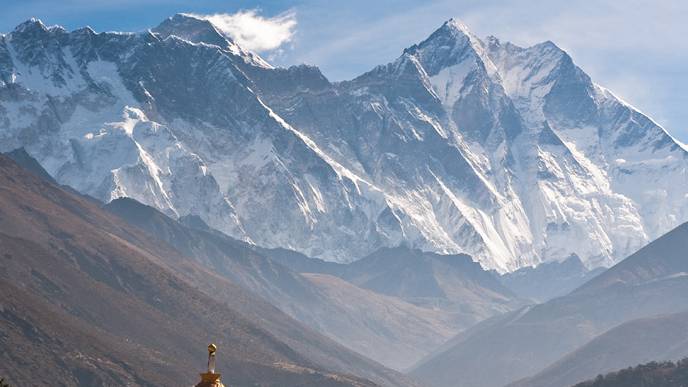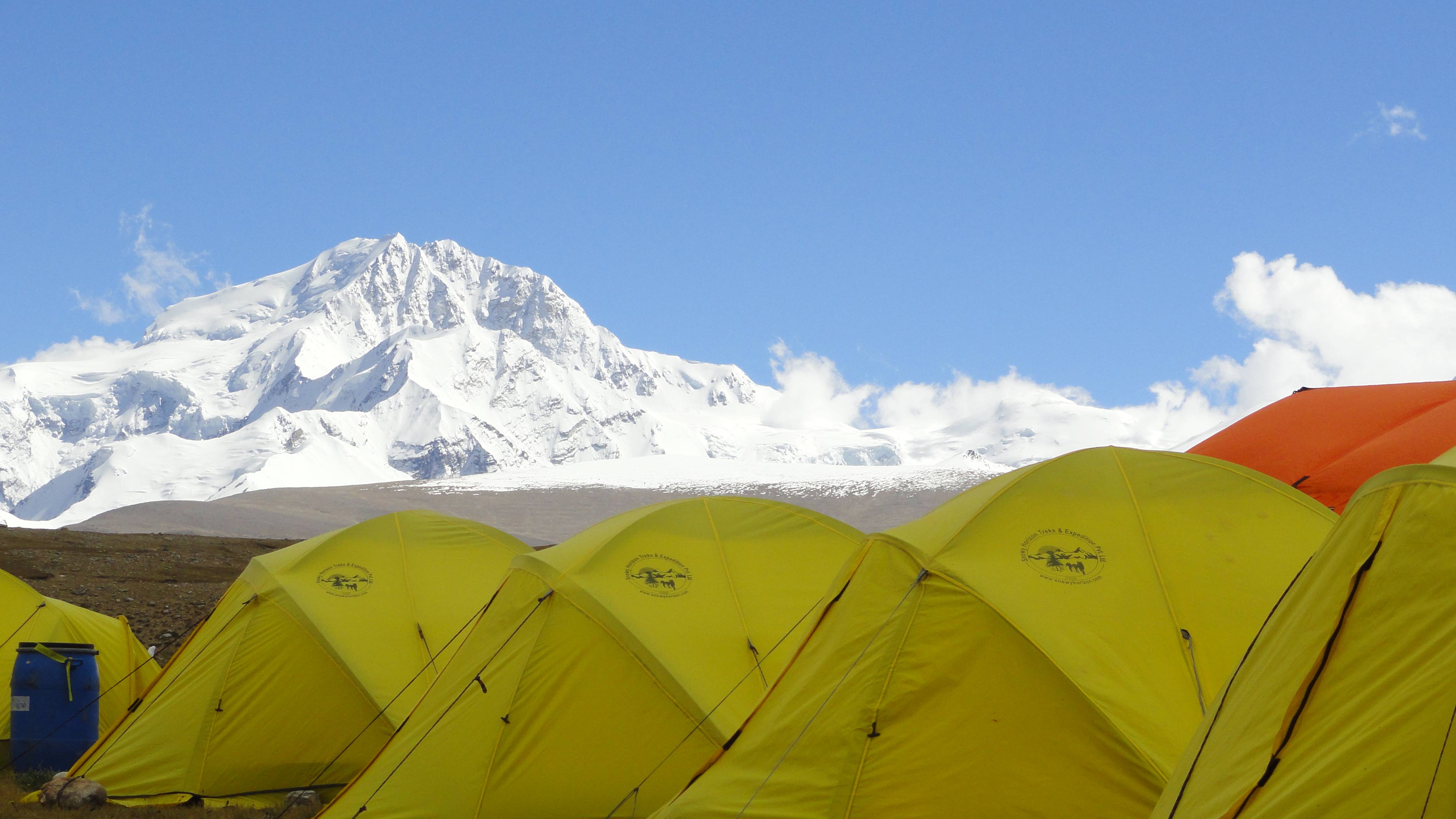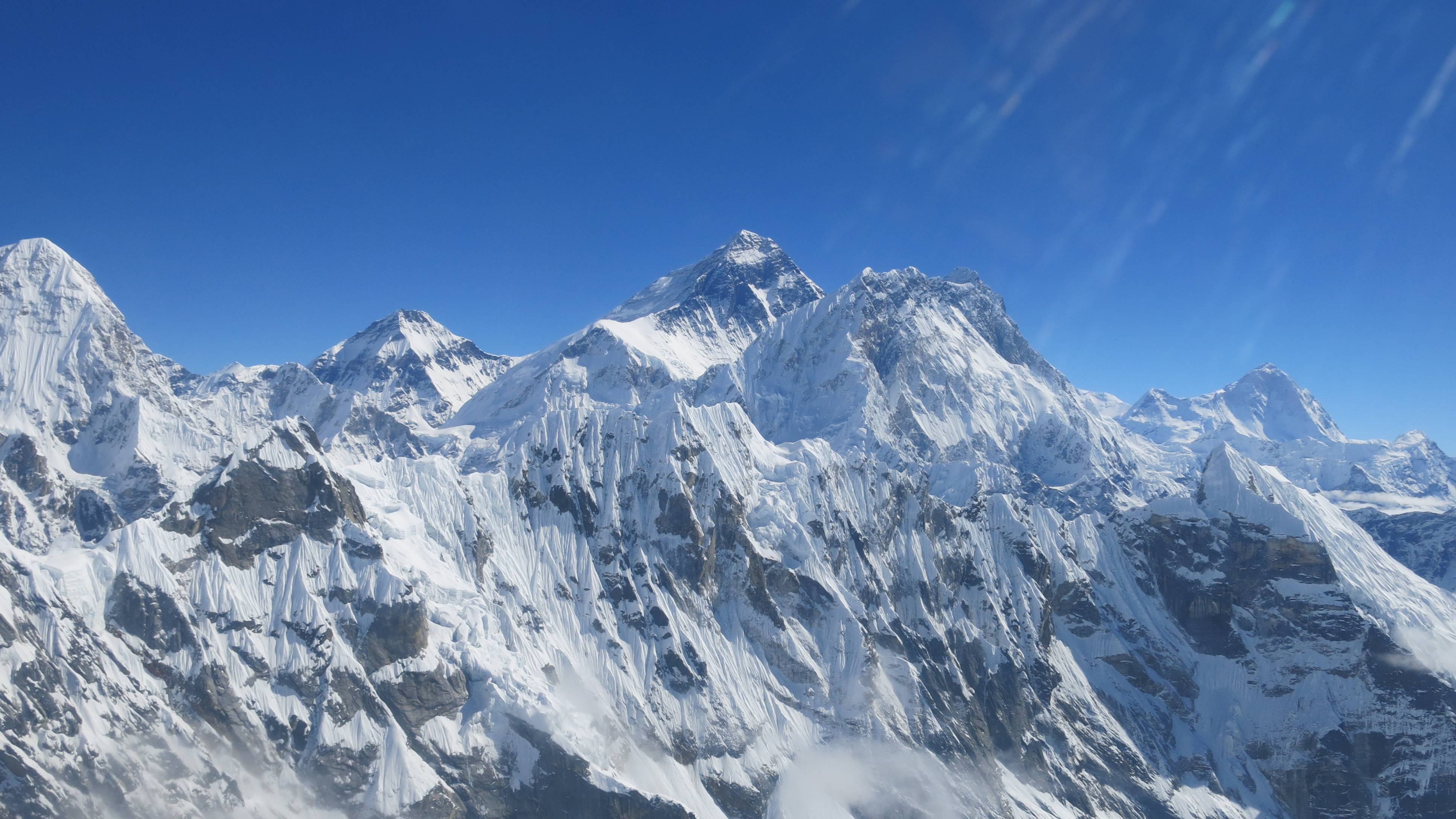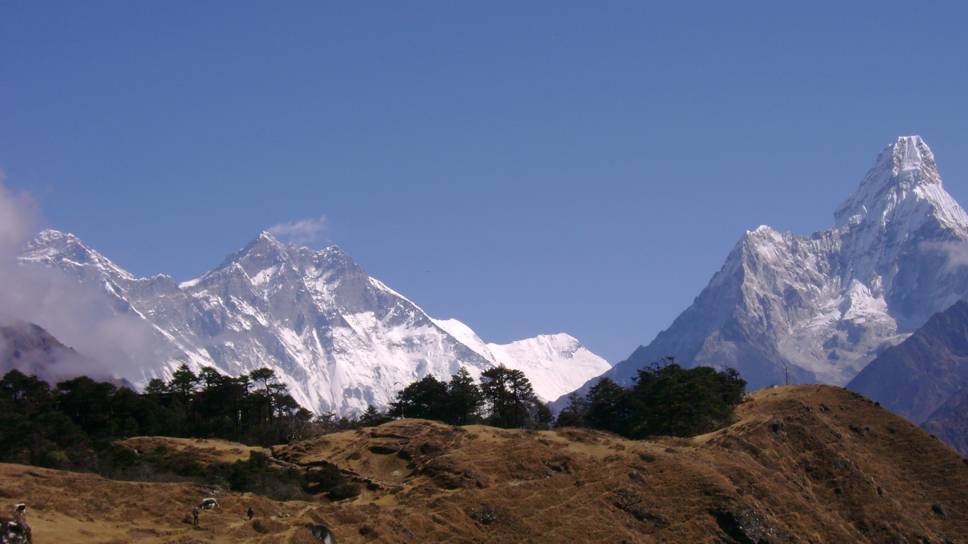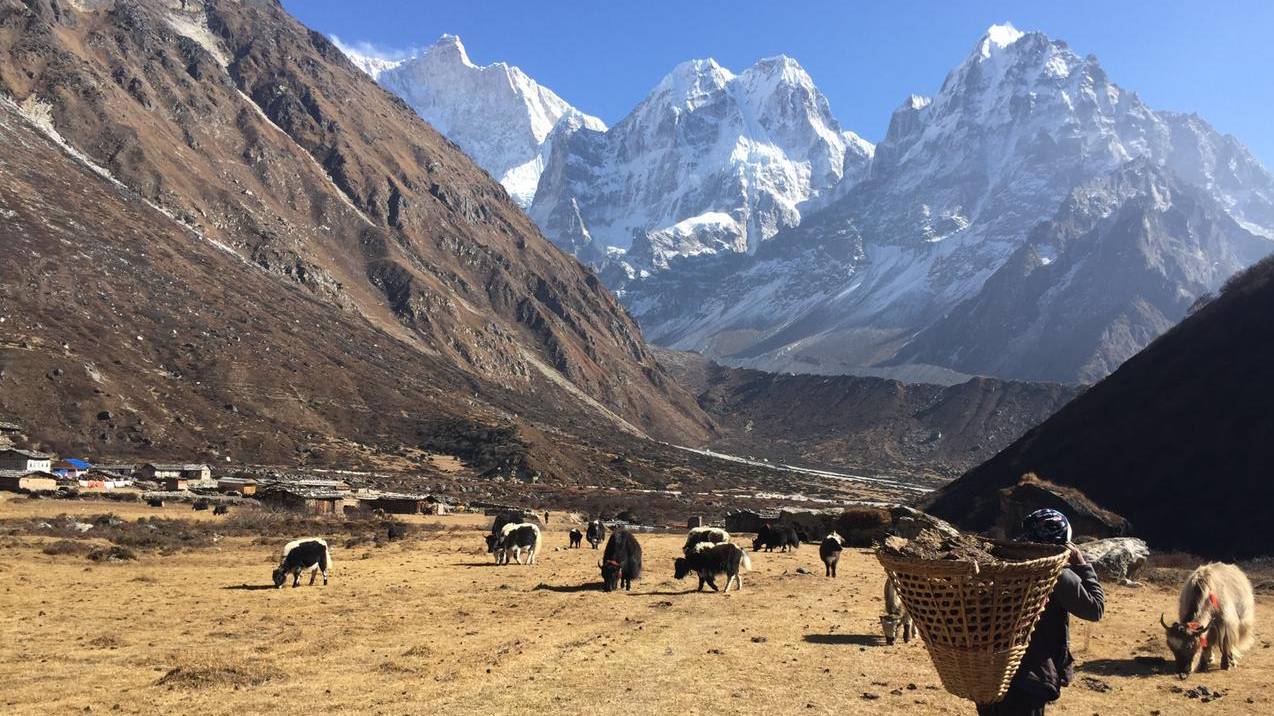Baruntse Expedition
Overview
“Explore and climb Mt. Baruntse (7129m), located in the heart of Khumbu Region and the lap of Mt. Everest and Mt. Makalu as one of the popular 7000m expedition in Nepal”
Mt. Baruntse lies in the heart of the Khumbu Region on the lap of Mt. Everest and Mt. Makalu. This mountain is becoming famous like Mt. Pumori, Ama Dablam and Mt. Everest for expeditions in this region. Baruntse is another attractive Mountain for climbing due to its location, classical symmetrical beauty and relatively accessibility to climbers across a wide range of skills. It is the most accessible 7000-meter peak in the region besides having a normal route of ascent. World-famous summiteers Edmund Hillary and Jim McFarland were also the summiteers of Mt. Baruntse. Colin Todd and Geoff Harrow ascended Baruntse firstly on 30 May 1954.
The Southeast Ridge of Baruntse is a bit difficult because of being a straightforward and hard way to climb. In the Expedition of Mt. Baruntse, there are hard sections of 50 Degrees elevation with a prominent ice cliff for climbing and facing the risk of avalanche. The climbers have succeeded in the mountain mostly in the spring season because of being the best season for the climber for safety. However, some climbers have reached the top of this mountain in the autumn season too.
Baruntse Expedition is an experience sense of being in a remote area without investing a considerable amount of time and effort. There are two ways of getting to the peak from Lukla via Mera La Pass and Hunku glacier with a possibility of climbing Mera peak as a part of the adventure and from Tumlingtar along the Makalu access trek and West Barun glacier. The second option offers also a crossover and walk-out via Mera La pass to Lukla, a full spectrum adventure.
The ascent route for Baruntse Expedition is through the southern ridge overhanging the famous West pass; this is in fact the traditional route opened by Hillary and Ship Ton in 1952. The regular approach begins at Lukla and takes you across the Hongu valley, one of the most fertile regions in Nepal, passing northward through a beautiful alpine environment. The walk passes through delightful Sherpa country and provides for excellent acclimatization. The Baruntse base camp is at an altitude of around 5400m and sits near the pristine lakes below Amphu Lapcha pass. The route then follows a long ridge leading to the summit. An ascent on Baruntse is an adventure for climbers wishing to meet a true Nepalese 7000-meter Peak.
Baruntse Climbing Base Camp Services:
- Snowy Horizon Treks & Expedition provides very professional, helpful and friendly service from Kathmandu to the Baruntse Base Camp and during the climb. Our objective is to provide a high-quality, helpful, safe, friendly, stress-free and comprehensive service to maximize the Baruntse summit opportunity.
- We offer a wide range of services from Base Camp logistics to fully guided climbs with individual climbing Sherpa helping their clients to achieve a summit.
- High elevation climbing requires not only a set of climbing skills and the fitness level but also the ability to cope with high elevation conditions affecting the ability to function to the extent possible at sea level, where most climbers are living.
- Our philosophy is to support climbers by the skill and high-altitude genetic ability of Climbing Sherpa, born and grew up at a higher elevation, as did his predecessors.
- Baruntse like all other 7000m peaks requires the set-up of 2-3 high camps, where the gear, food and fuel have to be carried. No matter how physically strong and fit one is at sea level. At a high level, your physical efficiency drops considerably and the team of Climbing Sherpa pooled from all clients will setup the route and allow you to summit.
- Having a personal Climbing Sherpa eliminates the arbitrage of the ‘Leader’ to decide who will get limited climbing support on the summit day. In the emergency situation, the classic expedition Leader has responsibility for a number of people including those with impaired physical abilities due to high altitude, while Climbing Sherpa has only responsible for his own client with high physical abilities at high elevation due to natural genetic predisposition and all in cooperation of other expedition Climbing Sherpa. Our Climbing Sherpa are highly trained and experienced climbers doing high elevation climbs in Nepal and Tibet season after season.
- We believe that our philosophy of an expedition with the Base camp Leader-Coordinator and the team of Climbing Sherpa assigned to individual climbers is by far the most efficient and safest way to achieve a high elevation summit.
- Our cooks and helpers will prepare and serve three delicious freshly cooked and plentiful meals a day and will ensure that hot and cold drinks are available 24hrs a day.
- We provide spacious expedition quality personal tents for all our clients. We also provide a dining tent, kitchen tent, toilet and portable shower facilities and tent accommodation for our staff.
- We provide access to communication including satellite telephone and internet access, solar panels to charge your batteries and UHF/VHF handheld radios on the mountain to maintain communications between ABC and high camps.
- Our Leader and camp manager as well as climbing Sherpa have an extensive experience in multiple climbs above 7000m, so whether you use our full board service or Base camp services you can expect good advice and support from them. They also know personally most of the other Climbing Sherpa and network together in the Base camp regardless of the operator they work for.
Baruntse Expedition Full Board Service:
- For full board clients, who would be less experienced climbers or single climbers requiring a climbing friend, we provide personal tent and food at high camps with the climbing Sherpa, who will prepare appropriate meals.
- We provide a personal climbing Sherpa guide to help the clients to reach the summit. Personal climbing Sherpa will set up high camps including food provisions and fuel and will guide and assist the client on the summit day and if required will set-up fixed rope to ensure the safety.
- We provide the climbing Sherpa with appropriate radio communication to Base Camp from the climbing route. Our Climbing Sherpa will network, cooperate and work with other clients Climbing Sherpa on the route to ensure the safety of his client as well as the overall expedition team.
- After arriving at the Base camp (5300m) we will take a day or so of acclimatizing rest and preparations including snow practice so that we all develop common understandings and refresh our basic climbing and rescue techniques. We develop our climbing protocol. Our climb protocol will follow principles of standard high elevation and acclimatization and building higher camps progressively.
- The standard route begins at the Base Camp (5300m) located on the Hunku glacier at the foot of the mountain on a small lake, which will be our water source. The water must be filtered or purified by iodine tablets, or boiling.
- We will first climb to Camp 1 located at 6100m along the Hunku glacier to the 150m long steep gully leading to West Col. We will set-up a fixed rope beeline to the Col, climb to Camp 1 and return to Base camp for overnight rest. As a next step, we climb up to camp 1, set it up and stay there overnight. We will explore the route to camp-2, and return to the Base Camp for another rest day.
- We move from the Base Camp directly to camp-2 (6400m), setup the camp and stay there overnight. There will be an opportunity for summit attempts for members who feel strong. We return to Base camp for a couple of rest days to rest and recover followed by another summit attempt. Our program allows 9 days for the climbing period to account for weather and individual physical condition and strength. It gives us plenty of opportunities to carry supplies to camps 1 and 2 and few opportunities for the summit push.
Approaches to ABC via Mera La Pass and the Hongu Valley:
- We will follow a standard approach from Lukla to Mera peak via Chatrawa La Pass and picturesque Hinku valley, where we undergo acclimatization at Thangnak and Khare. From Mera La pass, we will have an option to climb easy Mera Peak via Mera glacier for acclimatization and warm-up to Baruntse.
- From Mera la Pass, we down climb to Hunku glacier valley and Kongmadin and Seto Pokhari and follow it to Baruntse Base camp at the base of Baruntse below the West Col with one overnight camp at Seto Pokhari.
Climbing Routes:
Normal Route - Southeast Ridge
- The Southeast Ridge of Baruntse is a straightforward climb, mainly on snow but at high altitudes and crossing some steep sections of ice at 50°, with a prominent ice cliff at about 7,000m. We will setup a fixed-line there.
- The ridge geometry and position make it prone to the accumulation of cornices. Despite the cornices appearing very stable, we safeguard the steeper sections by fixed lines in places where we have to traverse between the camps. The avalanche risk on the lower slopes of the mountain appears to be low. The most successful ascents are made in the spring when good snow conditions prevail. This is also objectively the safest time on the mountain.
- We establish the Base Camp at 5300m (17,400ft) in a broad open valley next to a beautiful lake on the lateral moraine of the Hunku glacier near the base of the mountain.
Camp 1 (6100m):
To reach camp 1 (6100m) located on the West Col on the edge of Upper Barun glacier, we cross Hunku glacier to a steep gully leading directly toward. For the 150m steep and 50deg climb to the West Col from the glacier, there will be fixed ropes to provide a beeline to camp-1 for safe carrying of the loads required for the climb.
Camp 2 (6400m):
Camp 2 (6400m) is located on the edge of the Upper Barun glacier at the start of Southeast Ridge. From camp 1 at West Col, we begin a long glacier ascent on a low angled glacial slope; we may use a fixed rope to protect against open or hidden crevasses.
Summit Day (7129m):
From camp-2 we climb-up is a short steep 75 degrees ice wall to a small Col at 6500m. The next section to 6700m is a 45deg snow shoulder after which we reach a sharp summit ridge of Baruntse, which we follow to the wide summit cone leading to Mitru summit at 7129m. The view from the summit is just incredible, truly stunning views of Lhotse, Mount Everest, Cho Oyu, Kanchenjunga, Makalu, and the Khumbu Himal.
Day-to-Day Itinerary:
18 Oct: Day 01: Arrival at Kathmandu airport and transfer to hotel (1350m).
19 Oct: Day 02: Rest, last-minute shopping, preparation and briefing in Kathmandu.
20 Oct: Day 03: Drive to Manthali, Fly to Lukla (2840m); trek to Chhutang (3020m-3 Hrs.), lodge.
21 Oct: Day 04: Trek to Thuli Kharka (3900m-6 Hrs.) via Zatrawa La Pass (4610m); lodge.
22 Oct: Day 05: Trek from Thuli Kharka to Kothe (4095m-6 Hrs.); lodge.
23 Oct: Day 06: Trek from Kothe to Thangnak (4,350m-5 Hrs.); lodge.
24 Oct: Day 07: Rest and acclimatization day at Thangnak.
25 Oct: Day 08: Trek from Thangnak to Khare (5,045m-4 Hrs.); lodge.
26 Oct: Day 09: Rest and acclimatization day at Khare, explore Mera High Camp (5600m).
27 Oct: Day 10:Trek via Mera La (5320m) to Kongmadin (4800m-5 Hrs.), camping.
28 Oct: Day 11: Trek to Seto Pokhari Camp (5000m-5 Hrs.), camping.
29 Oct: Day 12: Trek to Baruntse Base Camp (5400m-4 Hrs.) and prepare base camp, camping.
30 Oct -14Nov: Days 13-28: Climbing period (Baruntse BC- Summit, 7129m-Baruntse BC)
15 Nov: Day 29: Clean Base Camp, trek to Kongmadin (4800m-5 Hrs.), camping.
16 Nov: Day 30: Trek from Kongmadin to Khare (5,045m-6 Hrs.); lodge.
17 Nov: Day 31: Trek via Thangnak to Kothe (4095m-6 Hrs.); lodge.
18 Nov: Day 32: Trek from Kothe to Thuli Kharka (3900m-5 Hrs.); lodge.
19 Nov: Day 33: Trek from Thuli Kharka to Lukla (2850m-7 Hrs.); lodge.
20 Nov: Day 34: Fly to Manthali, Drive to Kathmandu, transfer to Hotel; farewell dinner.
21 Nov: Day 35: Rest, D-Briefing and evening farewell dinner.
22 Nov: Day 36: Transfer to the airport for final departure
Day-to-Day Itinerary:
16 April: Day 01: Arrival at Kathmandu International Airport and transfer to the Hotel.
17 April: Day 02: Preparation, Briefings, and half-day sightseeing in Kathmandu.
18 April: Day 03: Drive to Manthali, Fly to Lukla (2800m)and trek to Chhutang (3020m), lodge.
19 April: Day 04: Trek from Chhutang to Thuli Kharka (3900m) via Zatrawa La Pass (4610m).lodge. 20 April: Day 05: Trek from Thuli Kharka to Kothe (4095m)., lodge.
21 April: Day 06: Trek from Kothe to Thangnak (4,350m), lodge. 22 April: Day 07: Rest and acclimatization day at Thangnak.
23 April: Day 08: Trek from Thangnak to Khare (5,045m), lodge. 25 April: Day 09: Rest and acclimatization day at Khare.
26 April: Day 10: Trek to Mera La (Pass) (5350m.), camping.
27 April: Day 11: Trek to Seto Pokhari Camp(4850m), camping.
27 April: Day 12: Trek to Baruntse Base Camp and prepare Base Camp, camping.
28 April-08 May: Days 13-25: Climbing period (Baruntse summit period-7129m)
09 May: Day 24: Preparation to return (Clean Base Camp) Trek to Seto Pokhari (4850m), camping. 10 May: Day 25: Trek to Mera La (5350m), camping.
11 May: Day 26: Trek to Thangnak (4356m), lodge.
12 May: Day 27: Trek to Thuli Kharka, lodge.
13 May: Day 28: Trek from Thuli Kharka to Lukla, lodge.
14 May: Day 29: Fly to Manthali, Drive to Kathmandu, free day.
15 May: Day 30: Rest, D-Briefing and evening farewell dinner.
16 May: Day 31: Transfer to the airport for final departure
Full Board Service Cost : Please contact us by email or call us
Cost Include
- All arrival and departure transfers to and from the airport both domestic and international.
- 4 Nights 3-star category Hotel accommodations in Kathmandu on BB Plan as per itinerary.
- 1:1 experienced private climbing Sherpa guide during trek and climb (Previous Summiteer).
- Flight Tickets for Ramechhap-Lukla-Ramechhap with two-way transportation from Kathmandu.
- Complete camping setup with dining & kitchen tents, chairs and tables in Advance Base Camp.
- Necessary shower and toilet tents, individual member tents in ABC.
- High altitude meal and tents for members & Sherpa sharing in Camp 1.2, & 3.
- Solar panel/generator for light and battery charge in Advance Base Camp.
- Three meals a day (BLD-tea-coffee) and twin sharing teahouse accommodation during the trek.
- Freshly cooked 3 meals (BLD), tea or coffee by Snowy professional cook in Advance Base Camp.
- 40 kg personal baggage while trekking up and 30 kg while down carried by the porter.Expedition royalty and climbing permit for climbing Mt. Baruntse (7129m).
- The fully paid government-appointed liaison officer in the team.
- Necessary kitchen staffs and camp manager in share plan at ABC.
- Medical, accidental, and search and rescue Insurance for all involved local staffs.
- All rope fixing and icefall management charges levied in the Expedition.
- Emergency oxygen mask and regulator in ABC for medical purposes only.
- Satellite phone in ABC available for members with the cost of US$ 5 per minute call.
- First Aid medical kits for the Group and the staffs.
- Free assistance service for cargo and duty clearance on domestic flights.
- Our service charge and government taxes levied in Nepal.
- Complete pre-departure information for the expedition.
- Farewell Dinner in a typical Nepali restaurant with a domestic culture show in Kathmandu.
- Snowy Horizon Special Gifts (T-shirt/Pashmina etc.).
Cost Exclude
- Lunch and Dinner during your stay in Kathmandu (except farewell dinner).
- Items of personal nature, laundry expenses and personal climbing gears.
- Expenses by the usage of landlines, mobiles, walkie-talkies or satellite phones and the Internet.
- Clothing, packing items or bags, personal medical kit, camera/video fees or trekking gears.
- Any extra expenses arising out of various/unforeseen situations like natural calamities, landslides, political disturbances, strikes, changes in Government regulations, etc.
- Any additional staff other than specified.
- Summit bonus to climbing Sherpa up to camp 4 and above (Minimum US$ 700.00).
- Tips for Base Camp Staffs (US$ 150 is mandatory in total per member)
- Rescue, medicines, medical tests and hospitalization expenses of the member.
- Medical and Travel Insurance with helicopter search and rescue.
- Permits for walkie-talkies & filming if special camera.
- Nepal custom duty for import of expedition goods.
- Any other item not mentioned in the “THE PACKAGE COST INCLUDES” section
Base Camp Service Cost : Please contact us by email or call us
Cost Include
- All arrival and departure transfers to and from the airport both domestic and international.
- 4 Nights 3-star category Hotel accommodations in Kathmandu on BB Plan as per itinerary.
- Flight Tickets for Ramechhap-Lukla-Ramechhap with two-way transportation from Kathmandu.
- Complete camping setup with dining & kitchen tents, chairs and tables in Advance Base Camp.
- Necessary shower and toilet tents, individual member tents in ABC.
- Solar panel/generator for light and battery charge in Advance Base Camp.
- Three meals a day (BLD-tea-coffee) and twin sharing teahouse accommodation during the trek.
- Freshly cooked 3 meals (BLD), tea or coffee by Snowy professional cook in Advance Base Camp.
- 40 kg personal baggage while trekking up and 30 kg while down carried by the porter.
- Expedition royalty and climbing permit for climbing Mt. Baruntse (7129m).
- Fully paid government-appointed liaison officer in the team.
- Necessary kitchen staffs and camp manager in share plan at ABC.
- Medical, accidental, and search and rescue Insurance for all involved local staffs.
- Emergency oxygen mask and regulator in ABC for medical purposes only.
- Satellite phone in ABC available for members with the cost of US$ 5 per minute call.
- First Aid medical kits for the Group and the staffs.
- Free assistance service for cargo and duty clearance on domestic flights.
- Our service charge and government taxes levied in Nepal.
- Complete pre-departure information for the expedition.
- Farewell Dinner in a typical Nepali restaurant with a domestic culture show in Kathmandu.
- Snowy Horizon Special Gifts (T-shirt/Pashmina etc.).
Cost Exclude
- Lunch and Dinner during your stay in Kathmandu (except farewell dinner).
- Items of personal nature, laundry expenses and personal climbing gears.
- Expenses by the usage of landlines, mobiles, walkie-talkies or satellite phones and the Internet.
- Clothing, packing items or bags, personal medical kit, camera/video fees or trekking gears.
- Climbing Sherpa Guide, high altitude food and tents above ABC (Camp: 1-2 &3).
- Any extra expenses arising out of various/unforeseen situations like natural calamities, landslides, political disturbances, strikes, changes in Government regulations, etc.
- Additional staff other than specified.
- Oxygen bottles and masks and regulators for members if required.
- Rescue, medicines, medical tests and hospitalization expenses of the member.
- Medical and Travel Insurance with helicopter search and rescue.
- Permits for walkie-talkies & filming if special camera.
- Nepal custom duty for import of expedition goods.
- Tips for Base Camp Staffs (US$ 150 is mandatory in total per member)
- Any other item not mentioned in the “THE PACKAGE COST INCLUDES” section
Notes
- Cost defers on Hotel Category for Hotels in Kathmandu.
- The itinerary is changeable and modifiable as per the needs and time frame of the clients.
- The cost will be re-calculated if the itinerary is changed or modified.
- Additional activities may be added as per request with nominal additional cost.
- For any kind of changes please contact us by email or call us.
- Grade: Mountaineering
- Elevation: 7,129m (23,389ft)
- Location: Nepal/Khumbu Region
- Coordinates: 27°53′00″ N 86°59′00″ E
- First Ascent: Colin Todd and Geoff Harrow, May 30, 1954
- Season: Late spring and autumn
- Duration: 31 days (typically)
- Group Size: 02-15 person per Group

